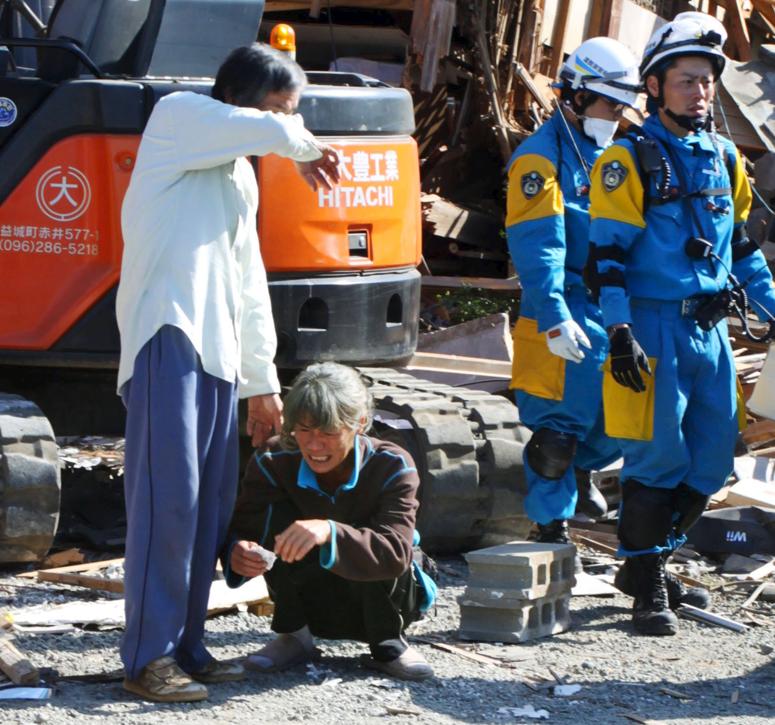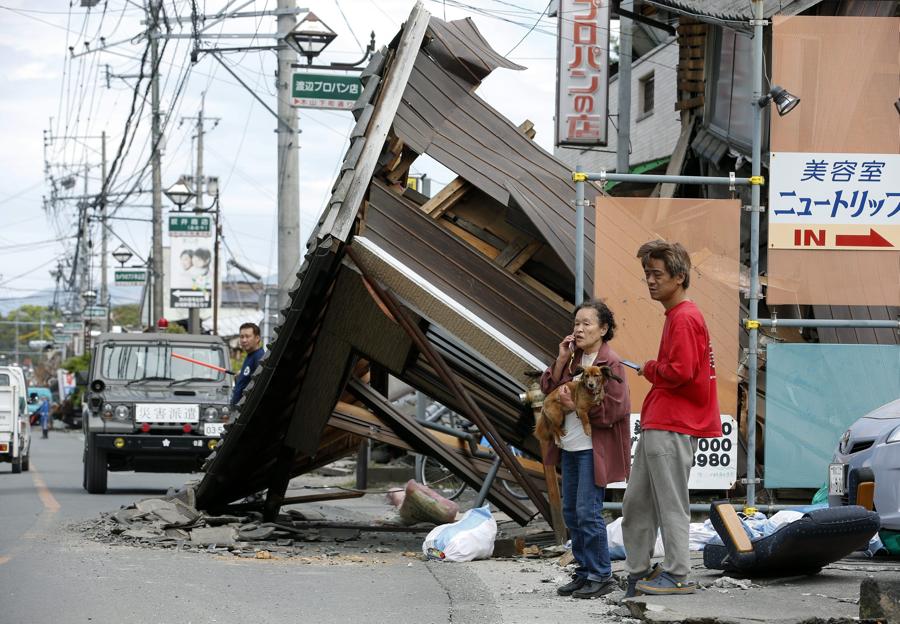

FUKUOKA, Japan — The death toll from two powerful earthquakes and a series of continual aftershocks on the Japanese island of Kyushu reached 41 Saturday, authorities said, as rescue workers searched for survivors under collapsed buildings and mountains of earth displaced by landslides.
The largest of the earthquakes struck the southwestern island early Saturday with a magnitude of 7.0, according to the US Geological Survey, making it even more powerful than a 6.2-magnitude quake Thursday night. The Japan Meteorological Agency said its measurements had registered the new quake at a magnitude of 7.3.
Saturday’s quake, which occurred just before 1:30 a.m., toppled houses and apartment buildings, buckled roads, and caused numerous landslides. Aftershocks shook the area throughout Saturday, more than 100 of them strong enough to damage buildings, the Meteorological Agency reported.
Police said 32 deaths were confirmed Saturday as a result of the quake and the aftershocks, adding to the nine deaths Thursday. Many of those killed were older adults; some were trapped under collapsed buildings, and several died in fires and landslides in the mountainous region.
Rescue units were working to free people from more than 50 collapsed buildings, Yoshihide Suga, the government’s chief cabinet secretary, said.
About 2,000 people were treated for injuries, NHK, the national public broadcaster, reported. Tens of thousands left their homes for school gymnasiums, community centers, and other temporary shelters as power failures left more than 100,000 households without electricity.
Some people prepared to spend the night in their cars, deeming them safer than houses or apartments.
Television footage showed dark smoke rising from Mount Aso, a volcano about 20 miles east of the town of Mashiki, in Kumamoto prefecture, where the centers of the strongest of the quakes have been clustered. Earthquakes and volcanic activity are closely associated, but the authorities said the eruption at Mount Aso, the biggest active volcano in Japan, was minor and did not pose an immediate threat.
Sections of a stone wall, centuries old, around Kumamoto Castle collapsed into the moat Saturday morning. The castle had already sustained damage Thursday. Several buildings at Aso Shrine, an ancient Shinto site on the north slope of Mount Aso that is considered a national treasure, also collapsed.
The Meteorological Agency classified the quake that set the disaster in motion Thursday as a “foreshock’’ of the even larger one Saturday. It warned that strong earthquakes could continue for days until the seismic fault line under the area settled. Heavy rain began to fall Saturday night, increasing the risk of more landslides.
In the town of Minami-Aso, east of Mashiki, landslides tore the moorings from a 670-foot suspension bridge, causing it to plunge into a valley, and buried more than a dozen homes, NHK said. Two students in a university agricultural program died after a dormitory building in the town collapsed, the network said.
The government said it was sending units from the army, known in Japan as the Self-Defense Forces, and from police departments around the country to help with rescue efforts.



